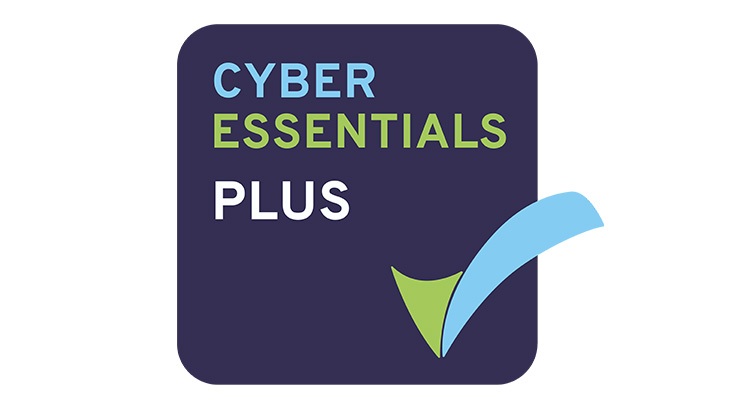Field Service Management Best Practises
Welcome to your deep dive into field service management best practices. In an era where 80% of customers (Capgemini) are prepared to pay a premium for superior service experiences, refining your operational strategies isn’t just beneficial—it’s essential.
Whether you’re looking to polish your existing procedures or are on the brink of a major overhaul, this guide is packed with insights and practical advice to elevate your service delivery. So, let’s get into the nuts and bolts of field service best practices.
What is Field Service Management?
Field service management enables you to coordinate all aspects of field service operations. At its most basic level, field service management involves:
- Scheduling service requests
- Dispatching customer service teams to tasks
- Tracking the status of work
- Planning employee hours and shift patterns
- Billing and invoicing
- Customer and engineer communications
- Data access and sharing
Field service management software enables this to go much further. In the modern world, cloud-driven field service management software facilitates all aspects of service delivery. Mobile apps can manage the field workers and the processes that make your field service business possible from end to end.
You can learn more about the benefits of field service management here.
Essential Best Practices in Field Service
Navigating the complexities of field service requires more than just good intentions; it demands robust strategies and innovative technology integrations. Here’s how you can optimise your operations to meet and exceed customer expectations.
Optimising Field Service Scheduling
Efficient scheduling is the backbone of successful field service management. But how can you ensure that it’s not just done but done well? Embrace automation. Today’s dynamic scheduling technologies are game changers, enabling you to match the right technician to the right job at the right time.
Cloud-based schedule and dispatch tools reduce human error, cut response times, and maintain high levels of customer satisfaction by ensuring prompt and reliable service. Remember, smooth scheduling benefits the entire service delivery cycle.
Leveraging Mobile Technologies and Applications
In this digital age, mobile technology is not just an add-on; it’s a critical part of field service management. By arming your field service technicians with mobile apps, you give them real-time access to essential information, regardless of location.
These apps can streamline communication between field service workers and back-office staff, provide access to customer history and job details, and even allow mobile data capture and invoicing.
Imagine your technicians accessing schematic diagrams or instructional videos on-site; this boosts their ability to resolve issues quickly and enhances the overall quality of service provided.
Enhancing Field Technician Productivity
The productivity of your field service technicians directly impacts your bottom line. So, how can you help them be more efficient? Equip them with comprehensive mobile tools that keep them connected and protected. Implement safety-first cultures with regular updates to operational guidelines accessible via mobile platforms and streamline their routes to minimise travel time and idle periods.
Intelligent scheduling and routing, with real-time updates and access to a detailed history of assets, transform average field service delivery into exceptional experiences.
Customer-Centric Approach
In field service management, the end game is always customer satisfaction. How you interact with your customers, resolve their issues, and value their time can set you apart from the competition. Here’s how you can adopt a customer-centric approach that always delights your customers.
Improving First-Time Fix Rates and Reducing Repeat Visits
Nothing frustrates a customer more than recurring visits to fix the same problem. That’s why improving the first-time fix rate (FTFR) is crucial. Achieving a high FTFR means equipping your technicians with the right information, tools, and parts to resolve issues in a single visit. It starts with comprehensive training and access to detailed customer history and job requirements.
Using mobile technologies, technicians can verify they have the correct parts before heading to the job site, ensuring they are fully prepared. This saves time and resources and significantly enhances customer trust and satisfaction.
Delivering Exceptional Customer Experiences
Your customers are your most valuable asset; their experiences define their loyalty. Every interaction must be seamless to deliver exceptional customer experiences, from the initial service request to the final follow-up. Utilise customer relationship management (CRM) systems to maintain detailed customer data, allowing personalised service that anticipates needs and preferences.
Moreover, empower your customer service representatives with real-time access to technician schedules and job statuses, enabling them to effectively provide accurate updates and manage expectations. Remember, a delighted customer is a loyal customer.
Implementing Proactive and Preventive Maintenance
Preventive maintenance isn’t just about keeping equipment running smoothly—it’s about demonstrating your commitment to customer care. By implementing proactive maintenance schedules based on predictive analytics and IoT data, you can identify and resolve potential issues before they disrupt your customers’ operations.
This approach minimises downtime and positions your service as thoughtful and attentive, reducing emergency calls and building a reputation for reliability. Regular maintenance visits can strengthen customer relationships and reaffirm your role as a trusted advisor in managing operational efficiency.
Workforce Management Best Practices
Effective workforce management is pivotal in field service operations, impacting everything from service quality to customer satisfaction and employee morale. Here’s how you can cultivate a team that’s not only skilled but also well-supported to enhance service levels.
Recruiting, Training, and Retaining Skilled Technicians
The backbone of excellent field service is a team of skilled technicians. To build this team, focus on recruiting individuals who are not only technically proficient but also exhibit strong customer service skills. Once on board, empower them with comprehensive training that includes technical and soft skills like communication and problem-solving.
To retain top talent, offer competitive compensation, opportunities for career advancement, and a work environment that values their contributions. Regular feedback and recognition of their hard work can also boost morale and help reduce turnover.
Empowering Field Teams with the Right Tools and Resources
Equipping your field teams with the right tools goes beyond just the physical. Yes, the latest equipment is essential, but so is access to cutting-edge technology. Utilise mobile apps that streamline communication and data management, ensuring technicians have all the information they need at their fingertips.
Invest in technology that facilitates easy access to technical manuals, inventory levels, and customer history. This empowerment leads to more efficient job performance and, ultimately, higher levels of job satisfaction.
Fostering Continuous Learning and Development
Continuous learning and development are vital to staying competitive in a rapidly evolving industry. Encourage your teams to engage in ongoing education and training to keep up with the latest technologies and methods. Provide regular training sessions, workshops, and access to courses to charge skill development.
Also, consider establishing a mentorship program where less experienced technicians can learn from seasoned professionals. Promoting a culture of learning not only enhances service delivery but also contributes to employee engagement and retention.
Data-Driven Decision Making
In today’s technology-driven environment, making decisions based on real-time data is more feasible and necessary than ever before. Utilising the wealth of information at your disposal can transform the efficiency and effectiveness of your field service operations. Let’s explore how you can leverage data to make informed decisions that propel your business forward.
Leveraging Field Service Analytics and Reporting
Data analytics and reporting tools are invaluable in understanding and improving your field service operations. By analysing trends and patterns in service delivery, you can identify areas of strength and pinpoint aspects that need enhancement. Implement systems that provide real-time analytics on technician performance, customer satisfaction levels, and service outcomes.
This data can help you adjust your strategies promptly, ensuring that you continually refine your service delivery to meet the evolving needs of your customers.
Utilising Predictive Maintenance and IoT Data
Predictive maintenance, powered by IoT data, is revolutionising field service management. By continuously monitoring equipment and systems, IoT sensors provide a steady stream of data that can predict when a machine is likely to fail or need servicing. This proactive approach allows you to schedule maintenance before breakdowns occur, minimising downtime and associated costs.
Additionally, leveraging IoT data can enhance the accuracy of your maintenance schedules, ensuring that your technicians are sent out only when necessary, thereby optimising their workload and productivity.
Making Informed, Data-Backed Decisions
The ultimate goal of collecting and analysing data is to make better decisions. With a solid data infrastructure, you can ensure that every choice—from strategic planning to day-to-day operations—is informed by accurate, up-to-date information. Foster a culture where data-backed decision-making is the norm rather than the exception.
Train your managers and decision-makers to interpret data correctly and to use this knowledge to make decisions that align with your company’s strategic goals and operational capabilities.
Conclusion
As we’ve explored throughout this guide, enhancing your field service management isn’t just about adopting new technologies—it’s about embracing a holistic approach that integrates best practices into every aspect of your operations. From optimising scheduling to delivering exceptional customer experiences, each element plays a vital role in crafting a service that stands out from the competition.
The journey to excellent field service management is ongoing. The landscape is continually evolving, driven by advances in technology and changing customer expectations. Staying ahead means being adaptable and continuously looking for ways to improve and innovate. To keep pace with the latest developments, consider exploring field service trends defining the industry’s future.
















